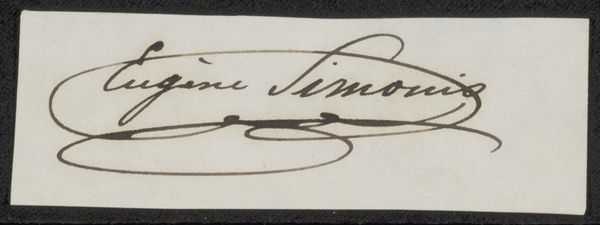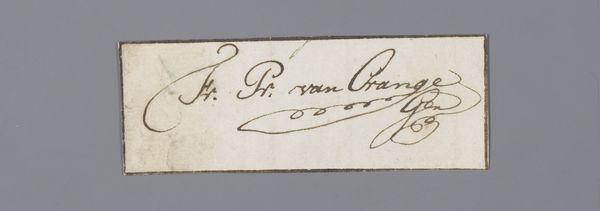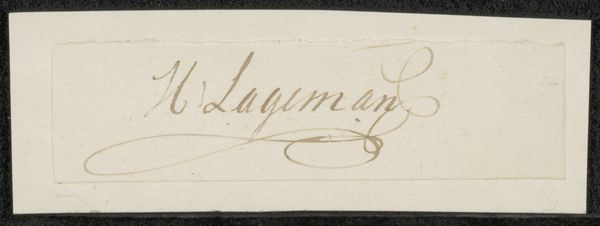
drawing, paper, ink
#
portrait
#
drawing
#
homemade paper
#
medieval
#
script typography
#
hand-lettering
#
hand drawn type
#
paper
#
personal sketchbook
#
ink
#
hand-drawn typeface
#
fading type
#
stylized text
#
thick font
#
delicate typography
Dimensions: height 3.8 cm, width 9.1 cm
Copyright: Rijks Museum: Open Domain
Editor: We are looking at a drawing called "Document" dating back to the 17th century, currently held in the Rijksmuseum collection. The artwork employs both paper and ink. What strikes you first? Curator: The calligraphy, undoubtedly. It seems less about immediate legibility and more about the flow of lines and the materiality of the ink on the page. There’s a performative aspect here, wouldn’t you agree? Editor: Absolutely. One can almost feel the movement of the hand as the ink was laid down. Homemade paper adds to its tactile quality; its production and the quality of ink contribute immensely to how we perceive the text now. Consider the social context: handwritten documents like this held enormous value. Curator: Indeed, the lines create shapes and shadows. There's something aesthetically pleasing even if the content itself remains obscured. Think of the formal elements: the balance between positive and negative space, the contrasting thicknesses of the lines—each is a deliberate choice on the part of the artist. Editor: That tactility you mention also speaks to me of the skill of the person who handled the raw materials. These materials - the ink and the paper itself – these were luxury items; how do the constraints, limitations and possibilities, the sourcing or manufacture, impact the artist and their work? Curator: A fascinating point! Focusing solely on the aesthetic qualities of a work might mean that we overlook this important contribution, obscuring the meaning conveyed within its socio-historical framework. Editor: It offers a valuable connection to the past, doesn't it? This simple act of handwriting as a skilled physical labor gives access to the time the document was produced. What would be the present day equivalent? It makes you think. Curator: Precisely. Thank you, it was most helpful to bring the circumstances and artistic elements together in the analysis. Editor: My pleasure! Understanding production informs our appreciation of art and text.
Comments
No comments
Be the first to comment and join the conversation on the ultimate creative platform.













